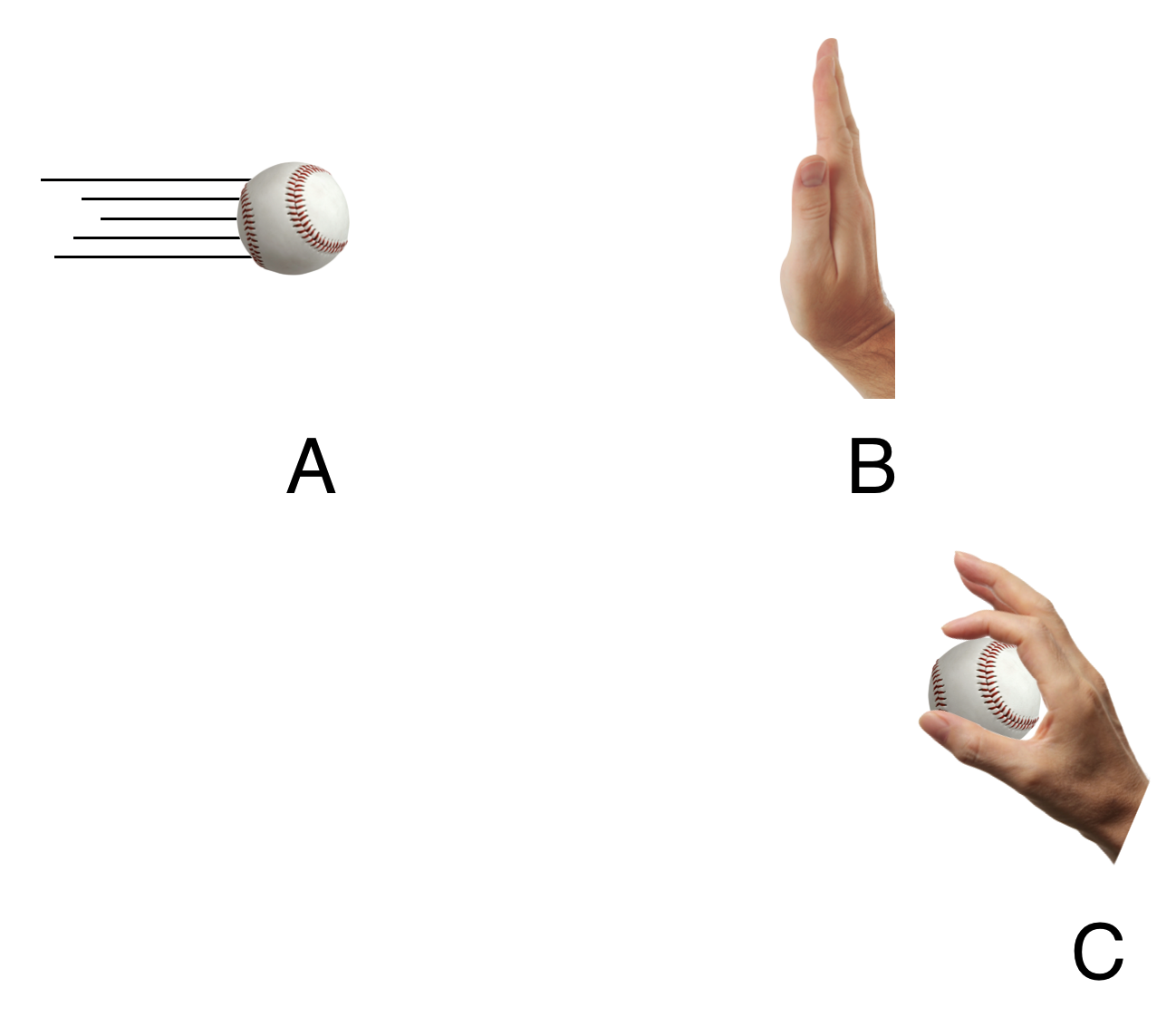A little deeper
Catching a Baseball.
The final speed in an collision:
This figure shows the before and after stages of this collision. In the top row, the ball (A) is approaching Herman’s hand at 50 mph. In the lower image, Herman has caught the ball and moved a little bit in order to conserve momentum.

What we would like to know is the speed of Herman and baseball (C) after he’s caught the ball.
Let’s calculate Herman and the baseball’s collective velocity after he’s caught a pitch: the final state is now a compound system consisting of (Herman + baseball), our (unless he drops it!).
We solved simple problems like this in the previous lesson and here we could take the same approach which relies on momentum conservation to insure:
The type collision is particularly easy to solve and we experience it or read about it in happy ways (a great, big hug) and in tragic ways (a bullet injury). Let’s define some terms, and I’ll put the solution to the equations into a graphical model.
Let’s simplify that momentum conservation equation to take into account that Herman is stationary before the collision, so . Let’s rewrite it with that in mind and fill in the momenta with their names and solve for the velocity of Herman and the ball together:
So the velocity of the combined object depends only on the masses of the ball and Herman, if he’s sitting still. Let’s put in the numbers:
- mph, which is m/s
- kg
- lbs which is kg
So the speed at which Herman and the ball move backwards is really small:
So Herman moves in the direction of the ball, but at a tiny speed. Pretty much what you’d expect.